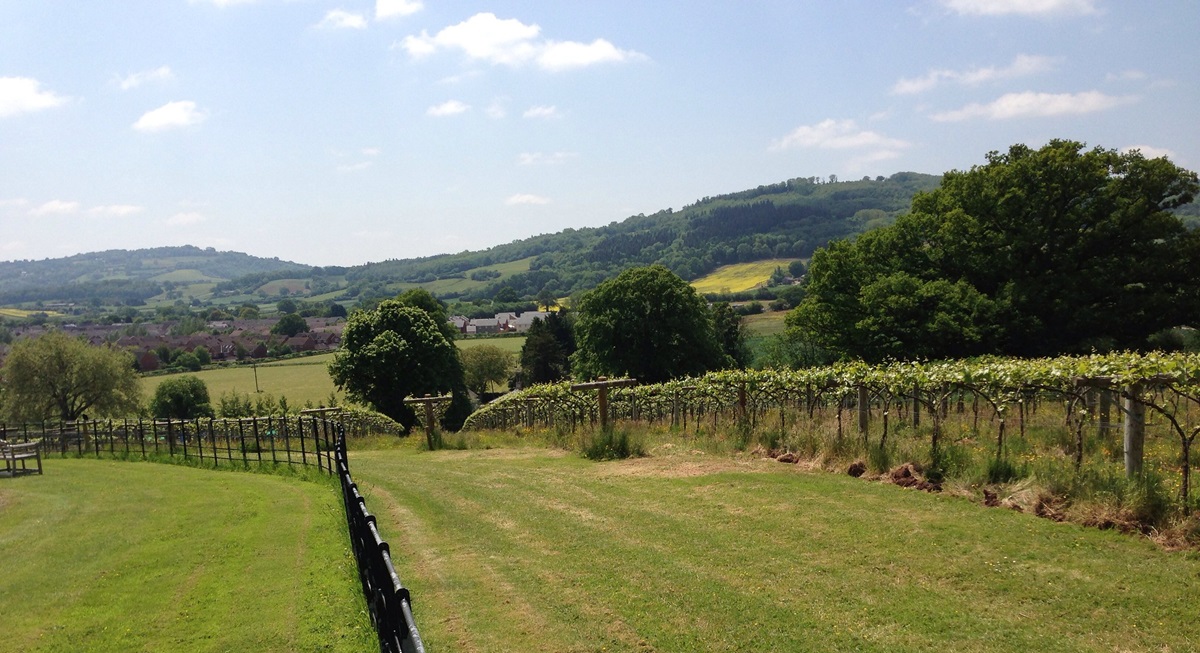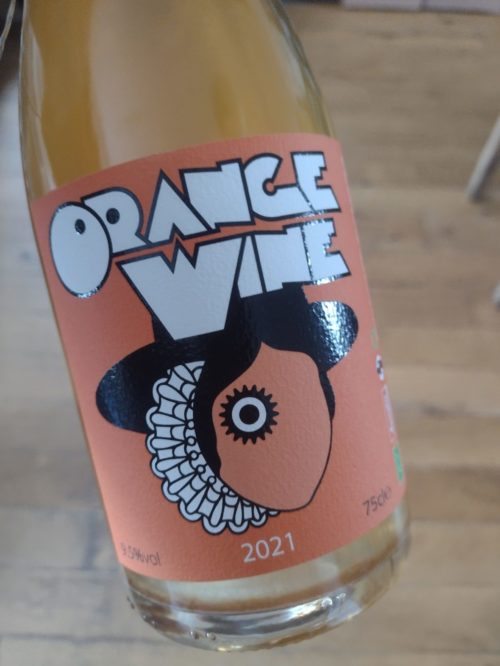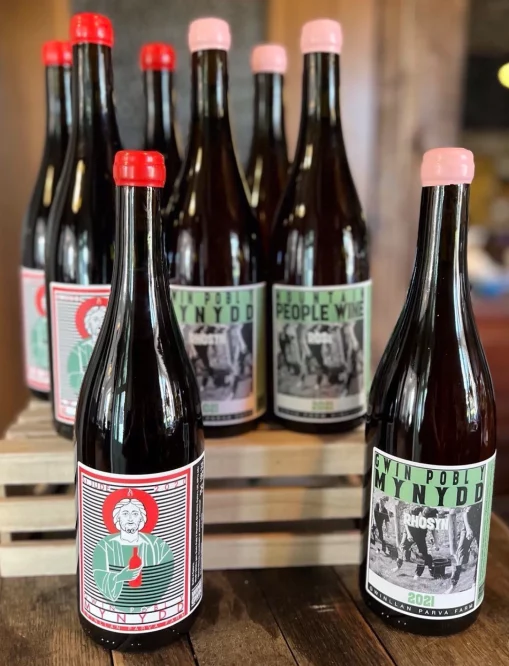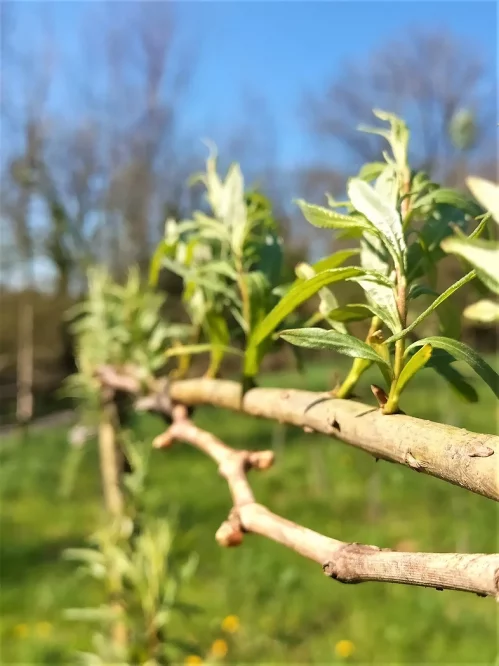Welsh Food Stories: Mainstreaming Welsh wine

Carwyn Graves
‘We could put loads of lab cultured yeast into this and make it taste like a conventional Cabernet or Chardonnay – but made this way, it tastes like Wales!’
Jemma is one of a growing wave of Welsh winemakers pouring both passion and integrity into an industry that is fast becoming mainstream in Wales, with ‘Welsh wine week’ attracting widespread media attention.
But alongside mainstreaming come important and age-old questions about identity; and who, or what Welsh wine is for.
‘Orange wine’
The current buzz around natural wine offers a way into these questions. With natural wine sales – including funky orange wine – growing rapidly across the western world, I asked acclaimed restaurateur and broadcaster Simon Wright what all the fuss was about.
He explained with enthusiasm that with natural wine ‘it’s about wine that tastes like where it’s come from – rather than where it’s going’. As he went on to elucidate, the long list of entirely legal additives in most conventional wines far outstrips what most customers would expect, and don’t need mentioning on the wine label. ‘They’re used because they give complete predictability of product. Whereas in any natural wine, it’s the fact that it expresses something about the grape’s interaction with the soil and the winemaker that makes it into something interesting in the first place. It’s just a completely different ballgame.’

Photo: Carwyn Graves
The orange wine phenomenon encapsulates this. In essence a white wine made with the methods normally reserved for reds, orange wine has a pedigree just as long as its more famous white-and-red sisters. In a 20thcentury world fixated on progress, volumes and predictability, these peasant orange wines with their slightly unpredictable, striking flavours fell by the wayside and out of popular consciousness.
Some of the finest natural wines now produced in the UK are made in Wales, with pioneers Ancre Hill offering a renowned orange and multiple other vintners working towards their own offerings. One of the factors that creates an interesting orange (or indeed red or white) wine is the interplay between climate and the grape. With Wales now becoming the established margin of the wine-making world – the new Mosel if you like -, its willingness to embrace the edge in the orange is likely to be symptomatic of the wider course of Welsh wine from hereon in.
Rooted in history
The more we learn about winemaking, and the sheer breadth of possibility latent in the world’s 10,000 varieties of grape and the endless combinations of geology, climate and skill, the more we realize the creative and ecological bankruptcy of the conventional approach to it so dominant throughout the 20th century.As with any good meal cooked from scratch or any food made with love and attention, winemaking is an art honed above all by practice. Surprisingly to some, the traces of this practice are far from being a complete novelty in Wales. The Welsh word ‘gwin’ first appears in the 10th century, well before the Norman invasion (from northern France) and is in fact a direct borrowing from the Latin. That betrays part of the reason for wine’s early ubiquity in the medieval world; it was a focal point of weekly mass and essential for all the many abbeys and monasteries that from early on spread throughout the country.
The first dependable record of vineyards in Wales are at Lamphey in Pembrokeshire, from the year 1326. Here not one but four separate vineyards are recorded, in the gift of the Bishop of St David’s. Not long after this secular lords – including Owain Glyndwr and the Blue Knight of Gwent – appear with private vineyards at their courts and castles; sometimes grown alongside figs, cherries and pears. Intriguingly, the first reference in the Welsh language to what must be orange wine also originates in this period, with the term ‘gwin gwinau’ (with ‘gwinau’ commonly used of animals of an auburn or chestnut hue) appearing more than once in the 13th and 14th centuries.
Viticulture
Viticulture spread further through the Tudor period, and Wales can claim further kudos from the fact that the modern wine-making movement in Great Britain can arguably be traced back to Glamorgan with the establishment of vineyards on the slopes beneath Castell Coch and at Swanbridge in the late Victorian era.
The Victorian ventures ultimately failed, whereas some of those from the Middle Ages in all likelihood persisted for centuries. That is above all explainable by the skill medieval winemakers were probably able to give their craft, knowledge being shared across the well-established networks of Catholic Europe of which Wales was then a part.

Wine on willow
It is precisely some of those time-tested skills that are now being drawn upon by Wales’ most interesting winemakers, including Jemma from Hebron vineyard, Carmarthenshire. Having spent the best part of a decade learning her trade in Spain, Jemma’s Welsh vineyard is now approaching its fifteenth anniversary. When I ask her what drives the venture, there is no hesitation in the reply; it’s a dedication to the land, and to making a wine that is in alignment with nature.
That is what has driven her and partner Paul to field experimentation with a range of traditional methods long-since ditched by the conventional wine world – including orange wines, maturing in ceramic amphora (as per Roman winemaking) and even growing vines not up wire supports, but willow. A Welsh innovation on the Roman art of arbustra, which is growing vines through living trees.

“In our damp climate it’s good to keep the vines and fruit well away from the ground for loads of reasons – ripening, air circulation etc. We tried with willow because it’s very happy where we are and it contains salicylic acid – which naturally repels mildew, one of the biggest challenges for vines in our part of the world.” Unsurprisingly perhaps, on their field trials of vines on willow versus vines on wire, the willow-trained vines are streets ahead – in growth vigour, fruit quality and health.
Rural patchwork
Like many Welsh vineyards, Hebron is a small family-run enterprise – in their case, only 4 acres of planted vines. And this brings us back to those core questions about Welsh wine’s identity going forward. In a changing climate and with consumers opting en masse to drink less alcohol – but usually better quality – will Welsh wine become an established part of our rural patchwork of generally small, family farms focused on producing food? Or will it become an investment commodity in a world where many previously safe investments are already turning sour? The reality today is that traditional wine-making areas further south than us in Europe are finding their summers becoming too hot and dry for their customary grapes, pushing winemaking further north and west. South-east English vineyards are already industrial in scale, with one Kent vineyard alone encompassing 1000 acres of vine.
Whither, then, Welsh wine?
This is part of a monthly series on Nation.Cymru on the diversity of Welsh food culture by Carwyn Graves. You can read the other installments of the series here.
Support our Nation today
For the price of a cup of coffee a month you can help us create an independent, not-for-profit, national news service for the people of Wales, by the people of Wales.







